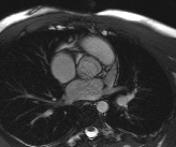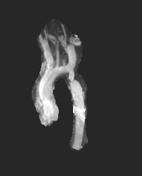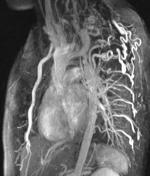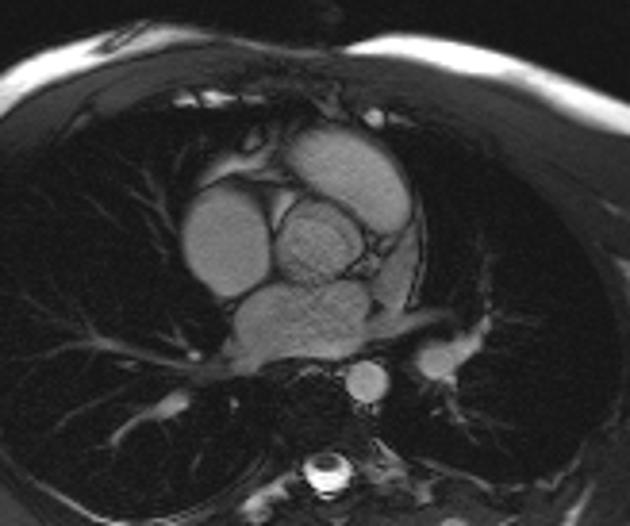Presentation
Early adulthood onset of hypertension.
Patient Data





Cine-SSFP images demonstrate an associated bicuspid aortic valve (only 2 commissures are seen, instead of the usual 3). On MRA, there is short segment abrupt narrowing of the aorta in the juxta-ductal region, consistent with adult-type aortic coarctation. Note the markedly dilated intercostal vessels and the internal mammary vessels (anteriorly).
Case Discussion
The most common association of adult-type aortic coarctation is bicuspid aortic valves. Cardiac MRI is advantageous for imaging aortic coarctation as it can directly demonstrate an associated bicuspic aortic valve, any accompanying valve dysfunction, and secondary effects upon the left ventricle eg concentric hypertrophy.
It is important to recognise that patients with bicuspid aortic valves have an associated aortopathy of the ascending aorta, irrespective of whether the latter is dilated. The media is abnormal and is a predisposing factor for dilatation and dissection. Other complications of bicuspid aortic valves are aortic stenosis, aortic regurgitation and endocarditis.




 Unable to process the form. Check for errors and try again.
Unable to process the form. Check for errors and try again.